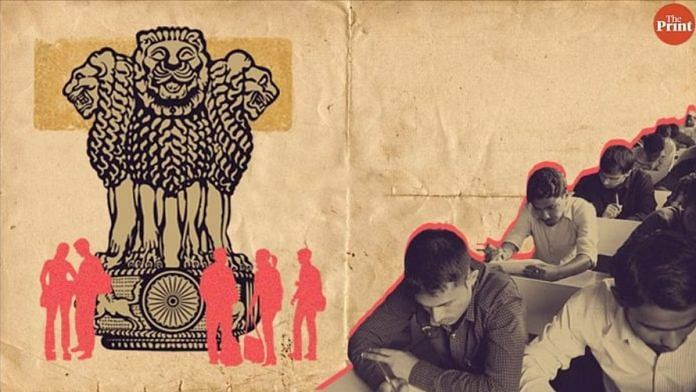New Delhi: The representation of the Other Backward Classes (OBCs) in central government employment has risen to nearly 22 percent in 2022-2023 from around 15 percent in 2012-2013, the latest period for which government data is available, an analysis by ThePrint has found.
Despite this improvement, however, the representation of the category still fell short of the 27 percent reservation benchmark set for it by the Mandal Commission. On the other hand, the representation of the Scheduled Castes (SC) and the Scheduled Tribes (ST) has largely remained above the standard set by the commission since at least 2012-2013.
The data, sourced from the Department of Personnel and Training (DoPT), also showed that the representation of OBCs in the highest grade of public service — Grade A, comprising senior and executive-level employees — grew to a little more than 18 percent from around 7 percent over the 11 years (2012-2013 to 2022-2023) for which ThePrint analysed the data.
The DoPT serves as the central government’s nodal agency for the selection, placement, and management of human resources in public service.
The findings are particularly relevant after controversy broke out over a Union Public Service Commission (UPSC) advertisement calling for lateral entrants to government jobs. It was strongly criticised by the Opposition, which said it was an attempt by the government to bypass the reservation provisions.
Following the backlash, the minister of state (DoPT), Jitendra Singh, Tuesday wrote to the UPSC chairman, asking him to withdraw the advertisement.
Singh said Prime Minister Narendra Modi’s position on the matter was that the lateral entry process must uphold the principles of equity and social justice as outlined in the Indian Constitution, particularly concerning the provisions on reservation.

SC representation stays above benchmark
Meanwhile, the DoPT data showed that the representation of SCs and STs mostly stayed above the required norms since 2013. The Mandal Commission had set reservation levels at 15 percent for SCs and 7.5 percent for STs.
SC representation dropped to 16.8 percent in 2022-2023 from 17.5 percent in 2021-2022. However, according to data accessed by ThePrint for the 11 years between 2012-2013 and 2022-2023, SC representation has never fallen below the 15 percent benchmark.
ST representation, on the other hand, dipped below the Mandal Commission benchmark three times over these 11 years. The most recent of these instances was in 2022-2023, when ST representation fell to 7.3 percent from 7.7 percent the year before. The other two instances were in 2012-2013 and 2019-2020.
Under the Narendra Modi government, the concept of lateral entry was first recommended by NITI Aayog in its 2017 three-year Action Agenda and by the Sectoral Group of Secretaries (SGoS) on Governance in its report submitted in February 2017.
The idea was to bring in personnel with domain expertise and specialised knowledge at middle and senior management levels into the central government, regardless of whether they were career civil servants. These lateral entrants would be part of the central secretariat, which until then had been composed solely of career officers from the All India Services/Central Civil Services.
(Edited by Sanya Mathur)
Also read: Centre considers common exam for SSC, Railways, public sector banks to streamline recruitment


